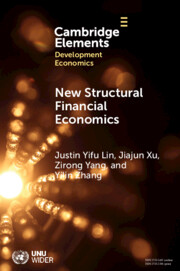576 results
Trauma diagnostic-related target proteins and their detection techniques
-
- Journal:
- Expert Reviews in Molecular Medicine / Volume 26 / 2024
- Published online by Cambridge University Press:
- 11 April 2024, e7
-
- Article
-
- You have access
- Open access
- HTML
- Export citation
Immune control in Kawasaki disease knowledge mapping: a bibliometric analysis
-
- Journal:
- Cardiology in the Young , First View
- Published online by Cambridge University Press:
- 11 April 2024, pp. 1-16
-
- Article
- Export citation
A molecular perspective on the genera Paragonimus Braun, Euparagonimus Chen and Pagumogonimus Chen
-
- Journal:
- Journal of Helminthology / Volume 73 / Issue 4 / April 1999
- Published online by Cambridge University Press:
- 11 April 2024, pp. 295-299
-
- Article
- Export citation
Unveiling the Intricacies of the Inner Ear Anatomy: Novel 3D-Printed Model for Detailed Visualization and Functional Demonstrations
-
- Journal:
- The Journal of Laryngology & Otology / Accepted manuscript
- Published online by Cambridge University Press:
- 11 March 2024, pp. 1-15
-
- Article
- Export citation
The expansion and remaining suitable areas of global oil palm plantations
-
- Journal:
- Global Sustainability / Volume 7 / 2024
- Published online by Cambridge University Press:
- 19 February 2024, e9
-
- Article
-
- You have access
- Open access
- HTML
- Export citation

New Structural Financial Economics
- A Framework for Rethinking the Role of Finance in Serving the Real Economy
-
- Published online:
- 15 February 2024
- Print publication:
- 29 February 2024
-
- Element
-
- You have access
- Open access
- HTML
- Export citation
Coulomb-driven electroconvection turbulence in two-dimensional cavity
-
- Journal:
- Journal of Fluid Mechanics / Volume 980 / 10 February 2024
- Published online by Cambridge University Press:
- 31 January 2024, A22
-
- Article
- Export citation
Optimising cervical cancer screening during pregnancy: a study of liquid-based cytology and HPV DNA co-test
-
- Journal:
- Epidemiology & Infection / Volume 152 / 2024
- Published online by Cambridge University Press:
- 23 January 2024, e25
-
- Article
-
- You have access
- Open access
- HTML
- Export citation
Annual mass-balance time series of Dongkemadi Glacier, 2000–20, from a linear albedo-based model using geodetic data and validated with the glaciological method
-
- Journal:
- Journal of Glaciology , First View
- Published online by Cambridge University Press:
- 15 January 2024, pp. 1-10
-
- Article
-
- You have access
- Open access
- HTML
- Export citation
LncRNA HOXA-AS2 Promotes Temozolomide Resistance in Glioblastoma by Regulated miR-302a-3p/IGF1 Axis
-
- Journal:
- Genetics Research / Volume 2022 / 2022
- Published online by Cambridge University Press:
- 01 January 2024, e9
-
- Article
-
- You have access
- Open access
- HTML
- Export citation
Stopping Power Modulation by Pump Waves of Charged Particles Moving above Two-Dimensional Electron Gases
-
- Journal:
- Laser and Particle Beams / Volume 2021 / 2021
- Published online by Cambridge University Press:
- 01 January 2024, e14
-
- Article
-
- You have access
- Open access
- HTML
- Export citation
Association between the PLTP rs4810479 SNP and Serum Lipid Traits in the Chinese Maonan and Han Populations
-
- Journal:
- Genetics Research / Volume 2021 / 2021
- Published online by Cambridge University Press:
- 01 January 2024, e14
-
- Article
-
- You have access
- Open access
- HTML
- Export citation
Synthetic Zeolites Derived from Fly Ash as Effective Mineral Sorbents for Diesel Fuel Spill Remediation
-
- Journal:
- Clays and Clay Minerals / Volume 64 / Issue 5 / October 2016
- Published online by Cambridge University Press:
- 01 January 2024, pp. 552-559
-
- Article
- Export citation
Effect of Viscosity on Stopping Power for a Charged Particle Moving above Two-Dimensional Electron Gas
-
- Journal:
- Laser and Particle Beams / Volume 2022 / 2022
- Published online by Cambridge University Press:
- 01 January 2024, e19
-
- Article
-
- You have access
- Open access
- HTML
- Export citation
Advanced Glycation End Products’ Receptor DNA Methylation Associated with Immune Infiltration and Prognosis of Lung Adenocarcinoma and Lung Squamous Cell Carcinoma
-
- Journal:
- Genetics Research / Volume 2023 / 2023
- Published online by Cambridge University Press:
- 01 January 2024, e4
-
- Article
-
- You have access
- Open access
- HTML
- Export citation
The Surface Modification of Zeolite 4A and Its Effect on the Water-Absorption Capability of Starch-G-Poly (Acrylic Acid) Composite
-
- Journal:
- Clays and Clay Minerals / Volume 62 / Issue 3 / June 2014
- Published online by Cambridge University Press:
- 01 January 2024, pp. 211-223
-
- Article
- Export citation
Transport and Exchange Behavior of Ions in Bentonite During Electro-Osmotic Consolidation
-
- Journal:
- Clays and Clay Minerals / Volume 63 / Issue 5 / October 2015
- Published online by Cambridge University Press:
- 01 January 2024, pp. 395-403
-
- Article
- Export citation
Pattern evolution and modal decomposition of Faraday waves in a brimful cylinder
-
- Journal:
- Journal of Fluid Mechanics / Volume 974 / 10 November 2023
- Published online by Cambridge University Press:
- 10 November 2023, A56
-
- Article
- Export citation
Antibiotic use in hospitalized patients with COVID-19: a population-based study in Hong Kong
-
- Journal:
- Antimicrobial Stewardship & Healthcare Epidemiology / Volume 3 / Issue 1 / 2023
- Published online by Cambridge University Press:
- 07 November 2023, e205
-
- Article
-
- You have access
- Open access
- HTML
- Export citation









